Use this nursing care plan and management guide to help care for patients who had a near-drowning experience. Learn about the nursing assessment, nursing interventions, goals and nursing diagnosis in this guide.
What is drowning?
Drowning is the third leading cause of unintentional injury death worldwide, accounting for more 360,000 deaths annually. Submersion in water leads to the rapid onset of hypoxemia (Wyckoff et al., 2022). Near-drowning is defined as survival for at least 24 hours from suffocation by submersion. Aspiration of water causes the plasma to be pulled into the lungs, resulting in hypoxemia, acidosis, and hypovolemia. Hypoxemia results from the decrease in pulmonary surfactant caused by the absorbed water leading to damage to the pulmonary capillary membrane. Severe hypoxia can also result from asphyxia related to submersion without aspiration of fluid.
Even so, consensus and society guidelines have standardized the definitions associated with drowning to provide a consistent guideline for writing, documenting, and studying these incidents. Terms such as “near-drowning,” “secondary drowning,” “wet drowning,” and “dry drowning” should no longer be used. Instead, drowning, fatal drowning, non-fatal drowning, and rescue provide more clarity, reliability, and uniformity for discussion and documentation.
Drowning is defined as “the process of experiencing respiratory impairment from submersion or immersion in liquid.” and drowning outcomes are fatal or non-fatal. Fatal drowning is a drowning event with a fatal outcome, whereas non-fatal drowning is a drowning event in which the process of respiratory impairment is stopped before death, and the victim survives.
The World Health Organization has proposed a framework to further classify non-fatal drowning based on the severity of respiratory impairment immediately after the drowning process has stopped:
- Mild impairment: breathing, involuntary distressed coughing, and fully alert.
- Moderate impairment: difficulty breathing and/or disoriented but conscious.
- Severe impairment: Not breathing and/or unconscious. It is further classified into morbidity category based upon any decline from previous functional capacity at the time of measurement.
- No morbidity: no decline
- Some morbidity: some decline
- Severe morbidity: severe decline.
The term rescue refers to an intervention that prevents progression to drowning in an individual who is submerged but at no time develops respiratory symptoms or impairment.
The three most important risk factors that contribute to drowning are the inability to swim or the overestimation of swimming capabilities, risk-taking behaviors, and inadequate adult supervision. A client who has drowned may be unresponsive. Other symptoms may include cold or pale skin, abdominal swelling, vomiting, cough with pink, frothy sputum, shortness or lack of breath, lethargy, and chest pain.
Freshwater drownings are far more common than saltwater drownings. Fresh water usually results in surfactant loss, hence, producing areas of atelectasis. Saltwater aspiration, on the other hand, results in pulmonary edema due to the osmotic effects of the salt within the lung.
Nursing Care Plans & Management
The nursing care plans and management for a client who has drowned include immediate assessment and stabilization of the patient’s airway, providing adequate oxygenation, maintaining cerebral perfusion, continuous monitoring, providing rewarming methods, initiating cardiopulmonary resuscitation (CPR) if necessary, and the absence of complications.
Nursing Problem Priorities
The following are the nursing priorities for patients who experienced drowning (submersion injury):
1. Maintain airway patency and adequate oxygenation
2. Assist with measures to facilitate gas exchange
3. Assess and monitor potential complications such as pulmonary edema, aspiration pneumonia, and neurological deficits
4. Provide emotional support and reassurance to the patient and the family
5. Educate the patient and the family on water safety measures, prevention of drowning incidents, and the importance of learning CPR.
Nursing Assessment
Assess for the following subjective and objective data:
- Coughing or gasping for air
- Difficulty breathing or shortness of breath
- Bluish skin or lips (cyanosis)
- Altered mental status or confusion
- Fatigue or exhaustion
- Chest pain or discomfort
- Vomiting or foaming at the mouth
- Frothy, pink-tinged sputum
- Changes in skin temperature (cool and clammy skin)
- Loss of consciousness
- Severe respiratory distress or complete respiratory failure
- Hypothermia (low body temperature)
- Seizures or convulsions
- Absence of breathing or no signs of life (cardiopulmonary arrest)
- Coma or unarousable state
Assess for factors related to the cause of drowning (submersion injury):
- Aspiration (freshwater or saltwater)
- Bronchospasm
- Pulmonary capillary membrane damage
- Pulmonary edema
- Pulmonary surfactant elimination
- Cerebral edema
- Gas exchange insufficiency
- Increased intracranial pressure (ICP)
- Prolonged hypoxemia
- Saltwater aspiration
- Fluid shift from intravascular to interstitial space
- Contaminated water aspiration
- Gastric contents aspiration
- Increased secretions
- Conductive heat loss
- Submersion in cold water for a prolonged period of time
Nursing Diagnosis
Following a thorough assessment, a nursing diagnosis is formulated to specifically address the challenges associated with this condition based on the nurse’s clinical judgment and understanding of the patient’s unique health condition. While nursing diagnoses serve as a framework for organizing care, their usefulness may vary in different clinical situations. In real-life clinical settings, it is important to note that the use of specific nursing diagnostic labels may not be as prominent or commonly utilized as other components of the care plan. It is ultimately the nurse’s clinical expertise and judgment that shape the care plan to meet the unique needs of each patient, prioritizing their health concerns and priorities.
Nursing Goals
Goals and expected outcomes may include:
- The client will maintain optimal gas exchange, as evidenced by arterial blood gases (ABGs) within the client’s usual range, oxygen saturation of 90% or higher, alert, responsive mentation or no further decline in the level of consciousness, relaxed breathing, and baseline heart rate for the client.
- The client will maintain optimal cerebral tissue perfusion, as evidenced by alert, responsive mentation; absence of neurological deficits; normoreactive pupils; normal or baseline motor function.
- The client will demonstrate stable vital signs and the absence of signs of increased ICP.
- The client will maintain adequate fluid volume, as evidenced by urine output greater than 30 ml per hour, normotensive blood pressure, and heart rate of less than 100 beats per minute.
- The client will display intake and output balance, good skin turgor, moist mucous membranes, palpable peripheral pulses, stable weight, and electrolytes within the normal range.
- The client will be free of infection, as evidenced by normal vital signs and the absence of purulent drainage from wounds, incisions, and tubes.
- The client will identify interventions to prevent and reduce the risk and spread of a secondary infection.
- The client will achieve an adequate cardiac output, as evidenced by strong peripheral pulses; normal vital signs; urine output greater than 30 ml per hour; warm. dry skin; and no further decrease in the level of consciousness.
- The client will display decreased episodes of dysrhythmias.
- The client will participate in behaviors and activities that reduce the workload of the heart.
- The client will display effective thermoregulation through stable temperature and pulse rate.
- The client will be free from cardiovascular and neurological injury.
- The client and/or caregiver will verbalize understanding of the condition, its effects, and potential complications.
- The client and/or caregiver will correctly perform necessary procedures and explain reasons for actions.
- The client and/or caregiver will initiate necessary lifestyle changes.
Nursing Interventions and Actions
Therapeutic interventions and nursing actions for patients who experienced drowning (submersion injury) may include:
1. Improving Gas Exchange
Clients with prolonged hypoxic episodes are prone to alveolar fluid aspiration resulting in vagally mediated pulmonary vasoconstriction, hypertension, and fluid-induced bronchospasm. Freshwater is considerably hypotonic relative to plasma and causes disruption of alveolar surfactant. Destruction of surfactant produces alveolar instability, atelectasis, and decreased compliance, with marked ventilation/perfusion (V/Q) mismatching (Cantwell & Verive, 2021). The following are the assessment and nursing interventions for improving gas exchange:
1. Assess the client’s level of consciousness.
Within three minutes of submersion, drowning clients are unconscious and are at risk for cerebral edema. Experienced swimmers may experience syncope secondary to hypoxia after hyperventilating to drive off carbon dioxide, while deep-water divers may succumb to “shallow-water blackout” as they ascend (Cantwell & Verive, 2021).
2. Assess the client’s respiratory rate, depth, and rhythm.
Changes in the respiratory rate and rhythm are early warning signs of impending respiratory difficulties. Impairment of gas exchange can result in both rapid, shallow breathing patterns and hypoventilation. Hypoxia is associated with increased breathing effort. Aspiration of as little as 1 to 3 ml/kg of fluid leads to significantly impaired gas exchange (Cantwell & Verive, 2021).
3. Auscultate the lung for breath sounds such as crackles and wheezing.
Crackles are caused by fluid accumulation in the airways and by pulmonary edema. Wheezing is related to bronchospasm. The presence of water in the airways triggers coughing and laryngospasm. When laryngospasm stops, the client may then aspirate larger volumes of water.
4. Monitor for signs of respiratory difficulties such as nasal flaring, stridor, retractions, and the use of accessory muscles.
The breathing pattern alters to increase chest excursion to facilitate effective breathing. The period of hypoxia or hypoxemia is initially limited to the duration of hypopnea or apnea and may resolve with initial rescue efforts (Cantwell & Verive, 2021).
5. Assess for any signs of worsening pulmonary edema.
Pink, frothy sputum is a classic sign of pulmonary edema; this necessitates the need for mechanical ventilation. Postobstructive pulmonary edema following laryngospasm and hypoxic neuronal injury with resultant neurogenic pulmonary edema may also occur. Acute respiratory distress syndrome (ARDS) from altered surfactant effect and neurogenic pulmonary edema often complicate management (Cantwell & Verive, 2021).
6. Monitor oxygen saturation and ABGs as ordered.
Pulse oximetry is a useful tool to detect changes in oxygenation. Oxygen saturation should be at 90% or greater. Decreasing PaO2 and pulse oximetry readings and increasing PaCo2 are signs of respiratory failure. ABG analysis is probably the most reliable clinical parameter in clients who are asymptomatic or mildly asymptomatic. ABG analysis should include co-oximetry to detect whether methemoglobinemia and carboxyhemoglobinemia (Cantwell & Verive, 2021).
7. Monitor chest-x-ray readings.
Chest X-ray reports on all submersion victims are done to assess the degree of aspiration and lung injury. Radiographic studies of lung water lag behind the clinical presentation by 24 hours. A chest X-ray may also detect evidence of aspiration, pulmonary edema, or segmental atelectasis, suggesting the presence of foreign bodies (Cantwell & Verive, 2021).
8. Maintain the client’s airway and assist with ventilation as needed while protecting the cervical spine.
Maintaining a patent airway is always the first priority. Cervical spine injuries should always be considered in victims of drowning, especially after a dive. Management of the client with a submersion injury is based on the degree of cerebral insult. The first priority is to restore oxygen delivery to the cells and prevent further hypoxic damage.
9. Provide oxygenation as ordered.
If the client has spontaneous breathing, supplemental oxygenation is administered by mask. Early use of intubation and PEEP, or CPAP/bilevel PEEP (BiPAP) in the awake, cooperative, and less hypoxic individual, is warranted if hypoxia or dyspnea persists despite 100% oxygen (Cantwell & Verive, 2021).
10. Insert nasogastric tube as indicated.
Nasogastric tube placement can be used for the removal of swallowed water and debris. The orogastric route may be used if head or facial trauma is present (Cantwell & Verive, 2021).
11. Anticipate the need for intubation and mechanical ventilation.
The outcomes of pulmonary injury are a clinical picture of acute respiratory distress syndrome: pulmonary edema, atelectasis, hyaline membrane formation, and pulmonary capillary injury. Early intubation and mechanical ventilation are suggested to prevent full decompensation of the client. Mechanical ventilation provides supportive care to maintain adequate oxygenation and ventilation (Cantwell & Verive, 2021).
12. Assist in endotracheal intubation.
Intubation may be required in order to provide adequate oxygenation in a client unable to maintain a PO2 of greater than 60 to 70 mm Hg on 100% oxygen by face mask. In the alert, cooperative client, a trial of BiPAP/CPAP, if available, may be provided for adequate oxygenation before intubation (Cantwell & Verive, 2021).
13. Use positive end-expiratory pressure (PEEP) for clients in mechanical ventilation.
Intubated clients with submersion injuries may require PEEP with mechanical ventilation to maintain adequate oxygenation. PEEP has been shown to improve ventilation patterns in the noncompliant lung in several ways (Cantwell & Verive, 2021).
14. Monitor the client placed on extracorporeal membrane oxygenation (ECMO) closely.
ECMO has been shown to be beneficial in selected clients. It may be considered in the following circumstances: respiratory compromise resulting from a lack of response to conventional mechanical ventilation or high-frequency ventilation, a reasonable probability of the client recovering neurologic function, and persistent hypothermia from cold-water drowning (Cantwell & Verive, 2021).
2. Maintaining Cerebral Tissue Perfusion & Cardiac Output
Hypoxic-ischemic brain injury is a foreboding sequela of asphyxial cardiac arrest associated with drowning. The degree of CNS injury remains the major determinant of subsequent survival and long-term morbidity in cases of drowning. Primary CNS injury is initially associated with tissue hypoxia and ischemia. Drowning that is associated with prolonged hypoxia or ischemia is likely to lead to both significant primary injury and secondary injury, especially in older clients who cannot rapidly achieve core hypothermia (Cantwell & Verive, 2021). The following are assessment and nursing interventions for maintaining cerebral tissue perfusion and cardiac output:
1. Using the Glasgow Coma Scale (GCS), assess the level of consciousness.
The GCS measures changes in the level of consciousness based on the verbal, motor, and pupillary responses. Early signs of cerebral hypoxia are restlessness and anxiety, leading to agitation, confusion, lethargy, and coma. A client who is alert or mildly obtunded at presentation has an excellent chance for a full recovery. Clients who are comatose, those receiving CPR at presentation to the ED, or those who have fixed and dilated pupils and no spontaneous respirations have a poor prognosis (Cantwell & Verive, 2021).
2. Monitor for any signs of seizure activity.
Any cerebral irritation or trauma places the client at risk of seizure. Seizures may be the result of acute cerebral hypoxia, but they may also be inciting events that lead to loss of consciousness and inability to protect the airway. Seizure increases cerebral metabolism and oxygen demand (Cantwell & Verive, 2021).
3. Monitor the client’s environment for the degree of stimulation.
Environmental stimuli may precipitate increased ICP episodes. However, no evidence supports that intracranial pressure monitoring affects the outcome of drowning victims. One could surmise the potential utility of intracranial pressure monitoring in the case of severe ARDS in order to monitor the impact of permissive hypercarbia and the effect of PEEP (Cantwell & Verive, 2021).
4. Assess cranial nerve responses, especially the vagus nerve.
The absence of cranial nerve X indicates a need for artificial airway maintenance. Aspiration of fluid occurs in the majority of submersion injuries. The aspirated fluid results in pulmonary edema, atelectasis, airway spasm, and pneumonitis, which aggravates hypoxia. The stimulation of the vagus nerve by cold water causes primary cardiac arrest.
5. Monitor the client’s blood pressure.
Vasodilation occurs during rewarming and hypotension may happen unless the client is closely monitored with interventions as necessary. Direct intra-arterial monitoring of pressure should be anticipated for a continuing shock state. Profound hypotension may take place during and after the initial resuscitation period, especially when rewarming is accompanied by vasodilatation (Cantwell & Verive, 2021).
6. Monitor the client’s temperature.
Severe acute submersion hypothermia may be present. Myocardial contractility and vasomotor tone are decreased by hypothermia. It is important to remain cognizant that many clients present with hypothermia due to prolonged submersion times rather than true cold-water submersion (Cantwell & Verive, 2021).
7. Monitor the skin temperature and color and peripheral pulses.
Peripheral vasoconstriction produces cool, pale, diaphoretic skin. Pulses may be weak with reduced output. Swimming may serve as an arrhythmogenic trigger and result in the diving reflex, which can lead to autonomic instability. The diving reflex is elicited by contact of the face with cold water and consists of breath-holding, bradycardia, and intense peripheral vasoconstriction (Cantwell & Verive, 2021).
8. Palpate peripheral pulses.
A careful search for pulses should be performed for at least one minute before initiating chest compressions because sinus bradycardia and atrial fibrillation do not require immediate treatment. Pulses may be very weak and difficult to palpate if the drowning client is hypothermic or has sinus bradycardia or atrial fibrillation (Chandy & Richards, 2022).
9. Assess for dysrhythmias.
Low perfusion state, acidosis, hypoxia, hypothermia, or electrolyte imbalance can result in cardiac dysrhythmia that can compromise stroke volume and cardiac output. Primary arrhythmias, including long-QT syndromes and catecholaminergic polymorphic ventricular tachycardia, may predispose clients to fatal arrhythmias during swimming (Cantwell & Verive, 2021).
10. Monitor urine output.
Oliguria is a classic sign of inadequate renal perfusion from decreased cardiac output. A client with hypothermia can have significant hypovolemia and hypotension due to a “cold diuresis”. During the early phase of vasoconstriction, blood is redirected to core organs, central volume receptors sense fluid overload, and antidiuretic hormone production decreases, resulting in increased urine production.
11. Monitor ethanol levels and the toxicology screen results.
Recreational alcohol or drug use may be associated with drowning accidents; its effects may mask the true loss of consciousness. A detailed examination of the correlates of drowning indicates a strong association between alcohol consumption and drowning risk, with studies reporting that alcohol is a contributing factor in approximately 20% of all drowning deaths. This increases to 30% and 41% of all deaths related to recreational aquatic activity and river drownings, respectively, and to almost half in certain age groups (Hamilton et al., 2018).
12. Monitor glucose levels.
Hypoglycemia and hyperglycemia are not only associated with increased mortality and morbidity, but they are also especially detrimental in clients with brain injury. The injured brain is exquisitely sensitive to aberrations in serum glucose. Normoglycemia should be the target goal (Cantwell & Verive, 2021).
13. If hemodynamic monitoring is in place, assess the CVP, pulmonary artery diastolic pressure (PADP), pulmonary capillary wedge pressure, and cardiac output.
These direct measurements serve as optimal guides for therapy. CVP provides information on filling pressures of the right side of the heart; PADP and PCWP reflect left-sided fluid volume. Arterial and central venous catheters may be useful in monitoring cardiac output and related hemodynamic parameters (Cantwell & Verive, 2021).
14. Perform ECG monitoring.
ST segment changes in the electrocardiogram consistent with myocardial ischemia following non-fatal submersion may be due to takotsubo cardiomyopathy, coronary artery spasm, hypothermia, hypoxia, and less commonly, myocardial ischemia from occlusive coronary artery disease (Chandy & Richards, 2022).
15. Place the client in a prone position after pulling from the water. Promote a position of comfort once stabilized.
If possible, the client should be lifted out in a prone position. Theoretically, hypotension may follow lifting the client out in an upright manner because of the relative change in the pressure surrounding the body from water to air (Cantwell & Verive, 2021). Afterward, placing the client in a position of comfort decreases oxygen consumption and demand, reducing myocardial workload and the risk of decompensation.
16. Rewarm the client as appropriate (e.g., warm humidified oxygen, blankets, head wrap or over-the-bed heaters, and IV fluids warmed to 98.6° TO 104° F, as appropriate).
Depending on the length of time of submersion, water temperature, and ambient air temperature, the core body temperature may be quite low so the client should be rewarming slowly to avoid the rapid release of metabolites. In a hypothermic client with cardiac arrest, continue resuscitative efforts until the client’s core temperature reaches 32 to 35℃ (89.6℉) (Chandy & Richards, 2022).
17. Initiate a vasopressor infusion.
If hypotension is refractory despite measures, initiate a vasopressor, such as norepinephrine, infusion. Vasopressors increase vasoconstriction, which leads to increased systemic vascular resistance (SVR). Increasing SVR leads to increased mean arterial pressure (MAP) and increased perfusion to organs (Cardoso, 2022).
18. Administer inotropic agents: digoxin, amrinone, dobutamine, or dopamine as ordered
If hypotension occurs, these agents improve myocardial contractility, which increases cardiac output. Continuous intravenous inotropic dobutamine support can reasonably be given in the short term for admitted clients with severe systolic dysfunction who present with low blood pressure and a significantly decreased cardiac output to preserve systemic blood flow and protect from end-organ damage (Ashkar et al., 2022).
19. Administer plasma volume expanders, as ordered.
In clients with hypotension, administer intravenous crystalloids to counter the effects of immersion diuresis and correct other potentially contributing etiologies (Chandy & Richards, 2022). Volume expanders may be indicated to correct the fluid imbalance and optimize cardiac output. Rapid volume expansion may be indicated using isotonic crystalloid (20 ml/kg) or colloid (Cantwell & Verive, 2021).
20. Assist in extracorporeal cardiopulmonary resuscitation (ECPR).
In clients where conventional CPR is failing and ECMO is available, ECPR may be a salvage option and considered on a case-by-case basis (Chandy & Richards, 2022). ECPR involves the application of percutaneous veno-arterial extracorporeal membrane oxygenation (VA-ECMO) for the management of cardiac arrest in the ED. It functions as a bridge therapy, enabling temporary systemic organ perfusion (Felix & Campbell, 2022).
21. Provide supplemental oxygenation.
Supplemental oxygen should be provided via nasal cannula or face mask to maintain normal SpO2. Positive pressure non-invasive ventilation can improve oxygenation and be a bridge to tracheal intubation or be weaned off in one to two days in some clients (Chandy & Richards, 2022)
22. Institute seizure precautions such as side rails up and padded, the bed in a low position, and head protection if needed.
The client’s safety is a priority. Keeping the bed in the lowest position to reduces the risk of falls during seizure activity. Side rails and protective headgear reduce the risk of injury during tonic-clonic seizures. Avoid restraints but the side rails must be padded. All nearby furniture and other hazards from the area must be removed. The client may be oblivious to what is happening and may not even know what they are doing during a seizure (Al Sawaf et al., 2022).
23. Maintain the head of the bed elevated and maintain a midline head and body alignment.
This position promotes venous drainage from the brain to reduce ICP. Place the client in a lateral position with the neck slightly flexed; this will help the saliva drain from the mouth and prevent the tongue from falling backward (Al Sawaf et al., 2022).
24. Decrease the client’s exposure to unnecessary stimuli.
Attention to reducing environmental stimuli (noise reduction, curtain closing, avoiding unnecessary nursing activities) reduces the risk of seizures. Seizures following a hypoxic brain injury are common. However, clinical detection of seizures may be difficult in the ICU as these clients are frequently sedated and subjected to neuromuscular blockade, thus masking clinical signs (Topjian et al., 2012).
25. Decrease the frequency of suctioning.
Hypoxia and the Valsalva maneuver associated with suctioning may elevate ICP and place the client at further risk for seizures. One factor when considering seizure precautions is knowledge of triggers and precipitating factors. Even though non-compliance with medications is one of the most common causes of breakthrough seizures, all caregivers and healthcare workers should examine these individuals for any underlying metabolic triggers (Al Sawaf et al., 2022).
26. Administer anticonvulsants as ordered.
Drug therapy is the primary approach to preventing and managing seizure activity. A trial of anti-epileptic drugs is warranted in all clients with clinical seizures. In clients with non-convulsive seizures or non-convulsive status epilepticus, anti-convulsive treatment should be considered, although it is unclear whether treatment impacts the outcome. Prophylactic anticonvulsant medications are unproven (Topjian et al., 2012).
27. For clients with signs of increased ICP:
27.1. Maintain oxygenation levels.
Adequate oxygenation prevents further hypoxic damage. Client care may include endotracheal intubation with the administration of 100% oxygen at five to ten cm PEEP. Early intubation may also protect the airway from the aspiration of gastric contents, which is likely with submersion injuries.
27.2. Monitor electroencephalography (EEG) results as indicated.
Continuous EEG monitoring in critically ill clients revealed a 13% incidence of seizures; 92% of those seizures were exclusively non-convulsive. Evaluation for seizures allows the potential for treatment and to inform prognosis (Topjian et al., 2012).
27.3. Monitor serum electrolytes as indicated.
Serum electrolyte changes after drowning are dependent on the type and amount of fluid aspirated. Care must be taken to avoid a hypoosmolar state in clients with hypoxic encephalopathy, which could promote cerebral edema and further aggravate secondary brain damage (Topjian et al., 2012).
3. Promoting Optimal Fluid Balance
Hypovolemia may be due to fluid losses from increased capillary permeability. Fluid aspiration of at least 11 ml/kg is required for alterations in blood volume to occur, and aspiration of more than 22 ml/kg is required before significant electrolyte changes develop. Ingestion of large volumes of freshwater, rather than aspiration, is the likely cause of sub clinically significant electrolyte disturbances, such as hyponatremia, in children after drowning (Cantwell & Verive, 2021). The following are nursing assessments and nursing interventions for promoting optimal fluid balance:
1. Assess the client’s intake and output.
Although total fluid intake may be sufficient, shifting fluid out of the intravascular and into the extravascular spaces may lead to dehydration and decreased output. Measuring I&O accurately helps estimate fluid replacement needs. If fluid intake is possible, it should approximate losses through urine or insensible losses, such as diaphoresis or metabolism.
2. Monitor urine-specific gravity.
Specific gravity measurement provides information on the degree of fluid concentration or dilution. Acute renal impairment is known to occur frequently in drowning, and, while usually mild, severe renal impairment requiring dialysis may occur (Cantwell & Verive, 2021).
3. Assess for crackles and shortness of breath.
These signs are caused by fluid accumulation in the lungs. However, the presence of crackles on auscultation of pulmonary congestion on X-ray film may not indicate fluid overload if the client has a saltwater aspiration, which pulls water from the circulation into the alveoli. Freshwater, on the other hand, moves rapidly across the alveolar-capillary membrane into the microcirculation. Freshwater is considerably hypotonic relative to plasma and causes disruption of alveolar surfactant (Cantwell & Verive, 2021).
4. Note any changes in heart rate and blood pressure.
Profound hypotension may take place during and after the initial resuscitation period, especially when rewarming is accompanied by vasodilatation. Hypoxemia may also directly damage the myocardium, decreasing cardiac output (Cantwell & Verive, 2021).
5. Monitor the client’s laboratory values, such as hematocrit, serum electrolytes, and renal function tests as ordered:
Hematocrit assessment determines the level of hemodilution or concentration. Dehydration is a hyperosmolar state in which serum sodium levels rise. Serum sodium levels decline with hemodilution. Hypokalemia may result from the increase in urinary output. If initial test results show elevated serum creatinine level, marked metabolic acidosis, abnormal urinalysis, or significant lymphocytosis, serial estimations of serum creatinine should be performed (Cantwell & Verive, 2021).
6. Monitor the client’s central venous pressure.
This direct measurement serves as an optimal guide for therapy. Severe hypovolemia will cause decreasing CVP, indicating the need for volume expanders. Arterial and central venous catheters may be useful in monitoring cardiac output and related hemodynamic parameters (Cantwell & Verive, 2021).
7. Insert and maintain indwelling urinary catheter.
A urinary catheter allows for close observation of renal function and prevents urinary retention. Retention of urine with its by-products of tissue-cell destruction can lead to renal dysfunction and infection.
8. Make fluids accessible to the conscious, stable client.
Encourage the use of fluids that are tolerable to the client and that replaces needed electrolytes, such as Gatorade or broth. These examples of fluid may enhance the client’s intake, as appropriate.
9. Assist with the insertion of a central venous line and arterial line as ordered.
These measures allow for more effective fluid administration and to facilitate hemodynamic monitoring. Central venous access was suggested to be utilized cautiously in hypothermic clients, in order to avoid stimulation of the hypothermic atrium with resultant dysrhythmias (Cantwell & Verive, 2021).
10. Administer fluid volume expanders as ordered.
Volume expanders are intravenous fluid solutions that are used to increase or retain the volume of fluid in the circulating blood. It can also correct fluid imbalances. Rapid volume expansion may be indicated using isotonic crystalloid (20 ml/kg) or colloid (Cantwell & Verive, 2021).
11. Administer inotropic agents as prescribed.
See Pharmacologic Management
4. Administering Medications and Pharmacologic Support
1. Dobutamine
Dobutamine can be used as temporary intravenous inotropic support until the resolution of the acute inducing factors or the client receives a more definitive treatment. Short-term intravenous inotropic support should be given to clients in cardiogenic shock to preserve systemic blood flow and protect them from end-organ damage (Ashkar et al., 2022).
2. Sodium Bicarbonate
Metabolic acidosis is corrected by the administration of sodium bicarbonate. Most acidosis is restored after improved oxygenation and correction of volume depletion. The main therapeutic effect of sodium bicarbonate administration is increasing plasma bicarbonate levels, which are known to buffer excess hydrogen ion concentration, thereby raising solution pH to combat clinical manifestations of acidosis (Senewiratne et al., 2022).
3. Broad-spectrum antibiotics
The choice of antibiotics will depend on the specific pathogens suspected or identified through culture and sensitivity testing, local resistance patterns, and individual patient factors. Commonly used antibiotics for respiratory infections in this context may include broad-spectrum antibiotics such as ceftriaxone, cefepime, or ampicillin-sulbactam.
4. Antifungals
Treatment of the organism Scedosporium apiospermum is challenging, as different species of this pathogen have shown different susceptibility patterns against antifungal agents. Results of some studies have shown that S. aurantiacum has the highest antifungal resistance profile among Scedosporium species. The susceptibility of S. aurantiacum only to voriconazole is in agreement with previous studies. Several reports have shown that a combination of voriconazole, itraconazole, and posaconazole, with caspofungin, might be effective in the treatment of drowning (Shokohi, 2021). Examples of antifungal medications that may be considered include fluconazole, voriconazole, or amphotericin B.
5. Initiating Measures for Infection Control & Management
Chemical pneumonitis is a more common sequela than pneumonia, especially if the submersion occurs in a chlorinated pool or in a bucket containing a cleaning product. After the initial recovery, drowning clients may develop nonpulmonary infections, including brain abscesses, osteomyelitis, and soft-tissue infections with unusual fungal, amebic, and bacterial pathogens. Because the causative organisms for these infections are rarely seen in other clinical settings, a high index of suspicion must be maintained in clients with acute or subacute injuries (Cantwell & Verive, 2021). The following are assessment and nursing interventions for initiating measures for infection control and management:
1. Assess the client’s temperature.
Fever provides data about the client’s response to invading organisms and is a sign of infection. Uncommon infections may present late and unusually. Observe for evidence of pneumonia and CNS infection (Cantwell & Verive, 2021).
2. Assess for any signs of respiratory difficulties.
Early assessment promotes immediate intervention. Infection in the sinuses, lungs, and CNS, as well as other common areas, may result from unusual soil and waterborne bacteria, amebas, and fungi. These infections are usually insidious in onset, typically occurring more than 30 days after the submersion injury (Cantwell & Verive, 2021).
3. Auscultate breath sounds.
The presence of rhonchi and wheezes may suggest retained secretions requiring expectoration or suctioning. The client can be asymptomatic if they experienced brief, witnessed submersions with immediate resuscitation. However, symptomatic clients may exhibit wheezing and coughing, as well as tachypnea, dyspnea, or hypoxia (Cantwell & Verive, 2021).
4. Monitor the client’s sputum including the amount, color, and odor.
Yellow or yellow-green sputum is indicative of respiratory infection. These changes in the characteristics of sputum reflect the resolution of pneumonia or the development of secondary infection.
5. Monitor the client’s white blood cell count and culture studies.
WBC elevation indicates the body’s effort to combat pathogens and is a sign of infection. Blood should be cultured from all clients who have aspirated water. Laboratory cultures determine the pathogen present and guide the selection of antimicrobial therapy. Organisms that usually cause infection after submersion injury include Pseudallescheria boydii, Scedosporium apiospermum, Naegleria, Balamuthia, Burkholderia, Aeromonas organisms, and newly discovered human pathogens Francisella philomiragia (Cantwell & Verive, 2021).
6. Monitor chest X-ray results as ordered.
Aspiration of contaminated water during drowning puts the client at risk for pneumonia. A chest X-ray may also detect evidence of pulmonary edema and segmental atelectasis, suggesting the presence of foreign bodies (Cantwell & Verive, 2021).
7. Encourage proper hand hygiene techniques.
Hand hygiene is an effective means of reducing the spread or acquisition of the infection. Good hand hygiene is also vital in preventing any infections acquired in healthcare, the spread of antimicrobial resistance, and other emerging health threats (World Health Organization, 2021).
8. Institute isolation precautions as appropriate.
Depending on the type of infection, and response to antibiotics, the client’s general health, and the development of complications, isolation techniques may be instituted to prevent the spread and protect the client from other infectious processes.
9. Encourage adequate rest and nutritional intake.
These facilitate the healing process and enhance natural resistance to pathogens. The client should still be encouraged to participate in self-care as tolerated to improve general well-being and muscle strength and stimulate immune system recovery. Adequate nutritional intake also improves general resistance to disease and reduces the risk of infection from static secretions.
10. Encourage using an incentive spirometer when the client is neurologically stable.
Incentive spirometers improve lung expansion and reduce alveolar collapse. Lung vascular damage is the most essential and crucial element causing ARDS. Lung physiotherapy for ARDS is important for improving physical performance and quality of life (Nandanwar et al., 2022).
11. Maintain the client in an upright position.
An upright position promotes optimal lung expansion and improved air exchange and reduces the risk of the stasis of secretions. Change the client’s position frequently to provide a good pulmonary toilet and promote expectoration and clearing of infection.
12. Maintain body temperature with cooling or warming blankets as indicated.
Continued hypothermia increases the risk of sepsis. Hypothermic clients with core temperatures less than 86℉ (30℃) who have undergone sudden, rapid immersion in cold water may experience slowing of metabolism and preferential shunting of blood to the heart, brain, and lungs, which may exert a neuroprotective effect during submersion (Cantwell & Verive, 2021).
13. Suction secretions as needed only. Provide a sputum sample for culture and sensitivity test.
Suctioning as needed reduces the stasis of secretions in the lungs and bronchial tree. In mechanically ventilated clients, secretions that accumulate below and above the ET tube cuff are an ideal growth medium for pathogens (Cantwell & Verive, 2021). Caution should be practiced during suctioning, however, because the client may have increased ICP, which may worsen which vigorous and frequent suctioning. Culture, and sensitivity testing help determine the appropriate selection of antibiotics.
14. Perform chest physical therapy as needed.
These maneuvers promote drainage (postural drainage) of the affected areas of lung tissue. Early rehabilitation therapy that starts during the acute illness stage is essential for improving the client’s physical performance. Early physical treatment can act as a rehabilitation bridge for ARDS clients (Nandanwar et al., 2022).
15. Administer antifungals as prescribed.
See Pharmacologic Management
16. Prepare for and assist with additional diagnostic studies, as indicated.
Bronchoscopy may be needed to remove foreign material, such as aspirated debris or vomitus plugs from the airway (Cantwell & Verive, 2021). However, there is no role for routine bronchoscopy in a drowning client unless there is clear evidence of aspiration of foreign material (Chandy & Richards, 2022).
5. Managing Hypothermia and Preventing Cold-Injuries
Hypothermia occurs commonly in drowning and is usually secondary to conductive heat loss during submersion, not synonymous with cold-water drowning. Hypothermia profoundly decreases cerebral metabolic rate, but neuroprotective effects seem to occur only if the hypothermia occurs at the time of submersion and only if very rapid cooling occurs in water with a temperature of less than 5℃ (Cantwell & Verive, 2021). The following are assessment and nursing interventions for maintaining optimal body temperature:
1. Monitor client temperature.
Hypothermia is defined as a core temperature below 35℃ (95℉). The stage of hypothermia, defined by core temperature, has a large impact on both recognition and treatment. The use of rectal temperature is reasonable in conscious clients. In clients with severe hypothermia, particularly those requiring endotracheal intubation, an esophageal probe inserted into the lower one-third of the esophagus provides a near approximation of cardiac temperature (Zafren & Mechem, 2022).
2. Monitor environmental temperature.
The room temperature and linens should be altered to maintain near-normal body temperature. The client must be extracted from the cold environment in the horizontal position whenever possible. Rewarming techniques should begin as soon as possible (Zafren & Mechem, 2022).
3. Monitor the level of consciousness closely using the Glasgow Coma Scale (GCS).
The neurologic manifestations of hypothermia may vary widely, but the level of consciousness should be consistent with the core temperature. The neurologic function begins declining even above a core temperature of 35℃ (Zafren & Mechem, 2022). A client with persistently altered mental status may have suffered a hypoxic-ischemic neurologic injury and/or have non-convulsive status epilepticus (Chandy & Richards, 2022).
4. Assess the client’s vital signs.
As compensatory mechanisms preventing hypothermia are overwhelmed, they alter the vital signs profoundly. Clients with mild hypothermia demonstrate tachypnea, tachycardia, initial hyperventilation, and “cold diuresis”. Moderate hypothermia is characterized by proportionate reductions in pulse rate and cardiac output, hypoventilation, decreased renal blood flow, and junctional bradycardia. Severe hypothermia can lead to oliguria, hypotension, bradycardia, and asystole. However, beware of vital signs inconsistent with the degree of hypothermia. This may suggest an alternative diagnosis (Zafren & Mechem, 2022).
5. Assess blood glucose levels.
Hypoglycemia and hyperglycemia are not only associated with increased mortality and morbidity, they are especially detrimental in clients with brain injury. The injured brain is exquisitely sensitive to aberrations in serum glucose (Cantwell & Verive, 2021). Hyperglycemia that persists during rewarming suggests pancreatitis or diabetic ketoacidosis (Zafren & Mechem, 2022).
6. Monitor laboratory test results.
Laboratory evaluation is essential to identify potential complications and comorbidities. A toxicologic screen may be obtained in a client with a depressed mental status that is not commensurate with the core temperature. Low normal hematocrit is abnormal in severe hypothermia since the hematocrit increases by 2% for each 1℃ drop in temperature. Rewarming may be accompanied by rapid or unpredictable changes in electrolyte levels, so frequent reassessment of these parameters is prudent (Zafren & Mechem, 2022).
7. Monitor ECG pattern changes.
Hypothermia obscures normal premonitory ECG changes commonly associated with hyperkalemia. Hypothermia also causes characteristic ECG changes because of slowed impulse conduction through potassium channels. This results in the prolongation of all the ECG intervals, including RR, PR, QRS, and QT (Zafren & Mechem, 2022).
8. Observe oxygenation cautiously.
Oxygenation should be monitored cautiously; however, the response time of pulse oximeters placed on the finger is slowed by hypothermia. Probes placed on the ears or forehead appear to be less influenced by decreased body temperature and the associated peripheral vasoconstriction (Zafren & Mechem, 2022).
9. Perform cardiopulmonary resuscitation (CPR) as indicated, whether in the field or the Emergency Department.
CPR, including chest compressions, should be initiated in clients with accidental hypothermia who sustain a cardiac arrest. If pulses are not found after checking for one minute, CPR should be started immediately and provided continuously if possible. In a client with a core temperature of 20 to 28℃, or if the core temperature is not known, administer CPR continuously for periods of at least five minutes, alternating with periods of no longer than 10 minutes without CPR (Zafren & Mechem, 2022).
10. Remove wet clothing from the client and start rewarming immediately.
In the awake, hypothermic client, remove wet clothing and initiate passive internal rewarming such as the application of warm blankets or heating pads. The resulting reduction in heat loss combines with the client’s intrinsic heat production to produce rewarming. However, passive external rewarming alone may be unsuccessful in the setting of glycogen depletion, sepsis, or hypovolemia, especially in older adult clients (Zafren & Mechem, 2022).
11. Assist with core rewarming techniques.
Core rewarming with warm oxygen, continuous bladder lavage with fluid at 40℃, and intravenous infusion of isotonic fluids at 40℃ can be initiated during resuscitation. Warm peritoneal lavage has been used for core rewarming in clients diagnosed with severe hypothermia (Cantwell & Verive, 2021).
12. Initiate active external rewarming for moderate to severe hypothermia.
During active external rewarming, some combination of warm blankets, heating pads, radiant heat, warm baths, or forced warm air is applied directly to the client’s skin. These methods are indicated for moderate to severe hypothermia and for clients with mild hypothermia who lack physiologic reserve or fail to respond to passive external rewarming (Zafren & Mechem, 2022).
13. Start rewarming from the trunk before the extremities.
Especially in chronic hypothermia with dehydration, rewarming of the trunk should be undertaken before the extremities. These actions are performed in order to minimize core temperature afterdrop with associated hypotension and acidemia due to arterial vasodilation. Hazardous core temperature afterdrop is a particular risk of active external rewarming which occurs when the extremities and trunk are warmed simultaneously.
14. Prepare the client for thoracotomy.
Thoracotomy, with open heart massage and warm mediastinal lavage, was used in refractory situations. The hypothermic heart is typically unresponsive to pharmacotherapy and countershock. Extracorporeal blood rewarming has been used in clients with severe hypothermia who did not respond to lavage or thoracotomy or to clients in arrest (Cantwell & Verive, 2021).
15. Insert central venous access carefully as indicated.
Central venous access is suggested to be utilized cautiously in hypothermic clients in order to avoid stimulation of the hypothermic atrium with resultant dysrhythmias.
16. Administer antibiotics as prescribed.
Hypothermic clients with an obvious source of infection should receive antibiotics. Additionally, clients who fail to raise their core body temperature to greater than 0.7℃/hour, despite appropriate rewarming efforts, should be treated empirically with broad-spectrum antibiotics (Zafren & Mechem, 2022).
6. Providing Patient Education & Health Teachings
A review of 50 cases of drowning that resulted in litigation noted that many of the deaths resulted from preventable omissions of basic safety methods. In most instances, drowning can be prevented with simple safety measures and common sense. Community education is vital in promoting water safety, injury prevention, and CPR initiatives (Cantwell & Verive, 2021).
1. Assess the client’s or caregiver’s knowledge about water safety.
Drowning can be prevented through targeted prevention strategies and public awareness. Studies of programs in Australia, Bangladesh, China, Thailand, the United States, and Vietnam show that teaching people and children basic swimming, water safety, and safe rescue skills reduce drowning (World Health Organization, 2014).
2. Identify risk factors that contribute to drowning.
Rates of drowning vary by sociodemographic factors, such as age, sex, race, ethnicity, and the presence of neurodevelopmental disorders. The highest rate of drowning is in the 0- to 4-year age group, with children aged 12 to 36 months being at the highest risk. Approximately 75% of childhood drowning victims are boys, and after the first year of life, boys are at greater risk of drowning than girls are at each age. Risks to race and ethnicity are likely related to differences in exposure, behavior, knowledge, and skills. Among children aged 0 to 19 years overall, drowning rates are highest among Black and American Indians (Denny et al., 2021).
3. Instruct caregivers to supervise their children at all times when around bodies of water.
Children, especially toddlers, should be supervised at all times when they are around water, including a bathtub, toilet, or bucket full of water. Toilet lids should be left closed, or a child-safe fastener device utilized, when not in use. Baby bath seats do not provide additional safety for unsupervised children. Household buckets should be immediately emptied after use and left empty when not in use. Water-containing objects, such as water tanks and cisterns, should have child-proof fastenings and solid tops (Cantwell & Verive, 2021).
4. Correct misperceptions of parents and caregivers regarding drowning situations.
Parents and caregivers may have misperceptions about what drowning looks like and how to appropriately supervise children. In a survey, researchers found that 48% of parents mistakenly believed they would be able to hear splashing or crying if their child was in trouble in the water, 56% believed that a lifeguard, if present, is the primary person responsible for supervising their child, and 32% reported leaving their child entirely unsupervised in a pool for two minutes or longer (Denny et al., 2021).
5. Reinforce the importance of a properly fenced pool.
All pools should be fenced appropriately. The use of adequate fencing around swimming pools has decreased the number of immersion injuries significantly by more than one-half. The enclosure may be a wall or fence that completely surrounds a pool on all four sides, isolating the pool from the remainder of the property. The enclosure must be at least 4ft tall with no more than four in-between openings in the fence (Cantwell & Verive, 2021).
6. Encourage parents and other caregivers to learn CPR.
Parents who own pools or who take their children to pools are encouraged to learn CPR. At least one parent or caretaker should remain focused on the children at all times, avoiding other activities that might disturb this concentration, such as using the phone and conversing with others.
7. Promote the use of flotation devices, especially among children.
Children should wear personal flotation devices in pool areas, but these do not eliminate the need for constant supervision. Air- or foam-filled swimming tools, such as “water wings”, inner tubes, and “noodles” are not substitutes for Coast Guard-approved personal flotation devices (PFDs) (Cantwell & Verive, 2021).
8. Provide examples of anti-entrapment and anti-entanglement measures.
Entrapment and entanglement prevention measures include the use of special drain covers, SVRSs, filter pumps with multiple drains, and a variety of other pressure-venting filter construction techniques. Residential pool owners should be educated to include these effective safety measures (Denny et al., 2021).
9. Encourage parents to enroll their children in swimming lessons and water survival training and competency.
Swim skills and water competency may be the most important drowning prevention measures in natural water settings because fencing and lifeguarding may be impractical in these settings. Developmental readiness for swim lessons is multifaceted; the determinant of readiness is not the child’s age but the confluence of physical, social, behavioral and emotional, and cognitive skills balanced against the environmental risks of drowning (Denny et al., 2021).
10. Educate about boating safety.
All individuals involved in boating activities should be able to swim, should use Coast Guard-approved PFDs when on the boat or in the water, and should avoid the use of alcohol or other recreational drugs. Boaters should be taught to anticipate wind, waves, and water temperature and to use protective suits and other insulating garments in cold weather. Children younger than 14 years should not use personal watercrafts unsupervised by an adult (Cantwell & Verive, 2021).
Recommended Resources
Recommended nursing diagnosis and nursing care plan books and resources.
Disclosure: Included below are affiliate links from Amazon at no additional cost from you. We may earn a small commission from your purchase. For more information, check out our privacy policy.
Ackley and Ladwig’s Nursing Diagnosis Handbook: An Evidence-Based Guide to Planning Care
We love this book because of its evidence-based approach to nursing interventions. This care plan handbook uses an easy, three-step system to guide you through client assessment, nursing diagnosis, and care planning. Includes step-by-step instructions showing how to implement care and evaluate outcomes, and help you build skills in diagnostic reasoning and critical thinking.

Nursing Care Plans – Nursing Diagnosis & Intervention (10th Edition)
Includes over two hundred care plans that reflect the most recent evidence-based guidelines. New to this edition are ICNP diagnoses, care plans on LGBTQ health issues, and on electrolytes and acid-base balance.

Nurse’s Pocket Guide: Diagnoses, Prioritized Interventions, and Rationales
Quick-reference tool includes all you need to identify the correct diagnoses for efficient patient care planning. The sixteenth edition includes the most recent nursing diagnoses and interventions and an alphabetized listing of nursing diagnoses covering more than 400 disorders.

Nursing Diagnosis Manual: Planning, Individualizing, and Documenting Client Care
Identify interventions to plan, individualize, and document care for more than 800 diseases and disorders. Only in the Nursing Diagnosis Manual will you find for each diagnosis subjectively and objectively – sample clinical applications, prioritized action/interventions with rationales – a documentation section, and much more!

All-in-One Nursing Care Planning Resource – E-Book: Medical-Surgical, Pediatric, Maternity, and Psychiatric-Mental Health
Includes over 100 care plans for medical-surgical, maternity/OB, pediatrics, and psychiatric and mental health. Interprofessional “patient problems” focus familiarizes you with how to speak to patients.

See Also
Other recommended site resources for this nursing care plan:
- Nursing Care Plans (NCP): Ultimate Guide and Database MUST READ!
Over 150+ nursing care plans for different diseases and conditions. Includes our easy-to-follow guide on how to create nursing care plans from scratch. - Nursing Diagnosis Guide and List: All You Need to Know to Master Diagnosing
Our comprehensive guide on how to create and write diagnostic labels. Includes detailed nursing care plan guides for common nursing diagnostic labels.
Other nursing care plans related to respiratory system disorders:
- Asthma
- Aspiration Risk & Aspiration Pneumonia
- Airway Clearance Therapy & Coughing
- Bronchiolitis
- Bronchopulmonary Dysplasia (BPD)
- Chronic Obstructive Pulmonary Disease (COPD)
- Cystic Fibrosis
- Hemothorax and Pneumothorax
- Influenza (Flu)
- Ineffective Breathing Pattern (Dyspnea)
- Impairment of Gas Exchange
- Lung Cancer
- Mechanical Ventilation
- Near-Drowning
- Pleural Effusion
- Pneumonia
- Pulmonary Embolism
- Pulmonary Tuberculosis
- Tracheostomy
References and Sources
- Al Sawaf, A., Arya, K., & Murr, N. (2022, August 29). Seizure Precautions – StatPearls – NCBI Bookshelf. NCBI. Retrieved December 28, 2022.
- Ashkar, H., Adnan, G., & Makaryus, A. N. (2022, September 27). Dobutamine – StatPearls – NCBI Bookshelf. NCBI. Retrieved December 28, 2022.
- Cantwell, G. P., & Verive, M. J. (2021, October 21). Drowning: Background, Etiology, Epidemiology. Medscape Reference. Retrieved December 27, 2022.
- Cardoso, S. (2022, August 18). Inotropes And Vasopressors – StatPearls – NCBI Bookshelf. NCBI. Retrieved December 30, 2022.
- Chandy, D., & Richards, D. (2022). Drowning (submersion injuries). UpToDate.
- Crumlett, H., & Johnson, A. (2017). Critical Care Nursing Certification: Preparation, Review, and Practice Exams, Seventh Edition. McGraw-Hill Education.
- Denny, S. A., Quan, L., Gilchrist, J., McCallin, T., Shenoi, R., Yusuf, S., Weiss, J., & Hoffman, B. (2021). Prevention of Drowning. Pediatrics, 148(2).
- Felix, A., & Campbell, D. D. (2022, June 10). Extracorporeal Cardiopulmonary Resuscitation: The Golden Hour EMRA. EMRA. Retrieved December 30, 2022.
- Hamilton, K., Keech, J. J., Peden, A. E., & Hagger, M. S. (2018). Alcohol use, aquatic injury, and unintentional drowning: A systematic literature review. Drug and Alcohol Review.
- Nandanwar, R. R., Singh, R., Karanjkar, S. M., & Bhagwani, R. S. (2022). The Impact of Pulmonary Rehabilitation in a Case of Acute Respiratory Distress Syndrome With Bronchopneumonia: A Case Report. Cureus, 14(12).
- Senewiratne, N. L., Woodall, A., & Can, A. S. (2022, September 12). Sodium Bicarbonate – StatPearls – NCBI Bookshelf. NCBI. Retrieved December 28, 2022.
- Shokohi, T. (2021). Fatal pulmonary Scedosporium aurantiacum infection in a patient after near-drowning: A case report. NCBI. Retrieved December 30, 2022.
- Slota, M. C. (Ed.). (2018). AACN‘s Core Curriculum for Pediatric High Acuity, Progressive, and Critical Care Nursing. Springer Publishing Company, LLC.
- Submersion injuries/drowning. (2015). In J. H. Brice, J. B. Myers, D. C. Cone, & T. R. Delbridge (Eds.), Emergency Medical Services: Clinical Practice and Systems Oversight, 2 Volume Set. John Wiley & Sons Incorporated.
- Topjian, A. A., Berg, R. A., Bierens, J. J. L. M., Branche, C. M., Clark, R. S., Friberg, H., Hoedemaekers, C. W. E., Holzer, M., Katz, L. M., Knape, J. T. A., Kochanek, P. M., Nadkarni, V., van der Hoeven, J. G., & Warner, D. S. (2012, September 6). Brain Resuscitation in the Drowning Victim. Neurocritical Care, 14, 441-467.
- Wilson, D., Rodgers, C. C., & Hockenberry, M. J. (Eds.). (2018). Wong’s Nursing Care of Infants and Children. Elsevier.
- World Health Organization. (2014). Global Report on Drowning: Preventing a Leading Killer. World Health Organization.
- World Health Organization. (2021, May 5). WHO calls for better hand hygiene and other infection control practices. World Health Organization (WHO). Retrieved December 30, 2022.
- Wyckoff, M. H., Singletary, E. M., Soar, J., Olasveengen, T. M., Greif, R., Liley, H. G., Zideman, D., Bhanji, F., Andersen, L. W., & Avis, S. R. (2022, March). 2021 International Consensus on Cardiopulmonary Resuscitation and Emergency Cardiovascular Care Science With Treatment Recommendations. Circulation, 145(9).
- Zafren, K., & Mechem, C. C. (2022). Accidental hypothermia in adults. UpToDate.
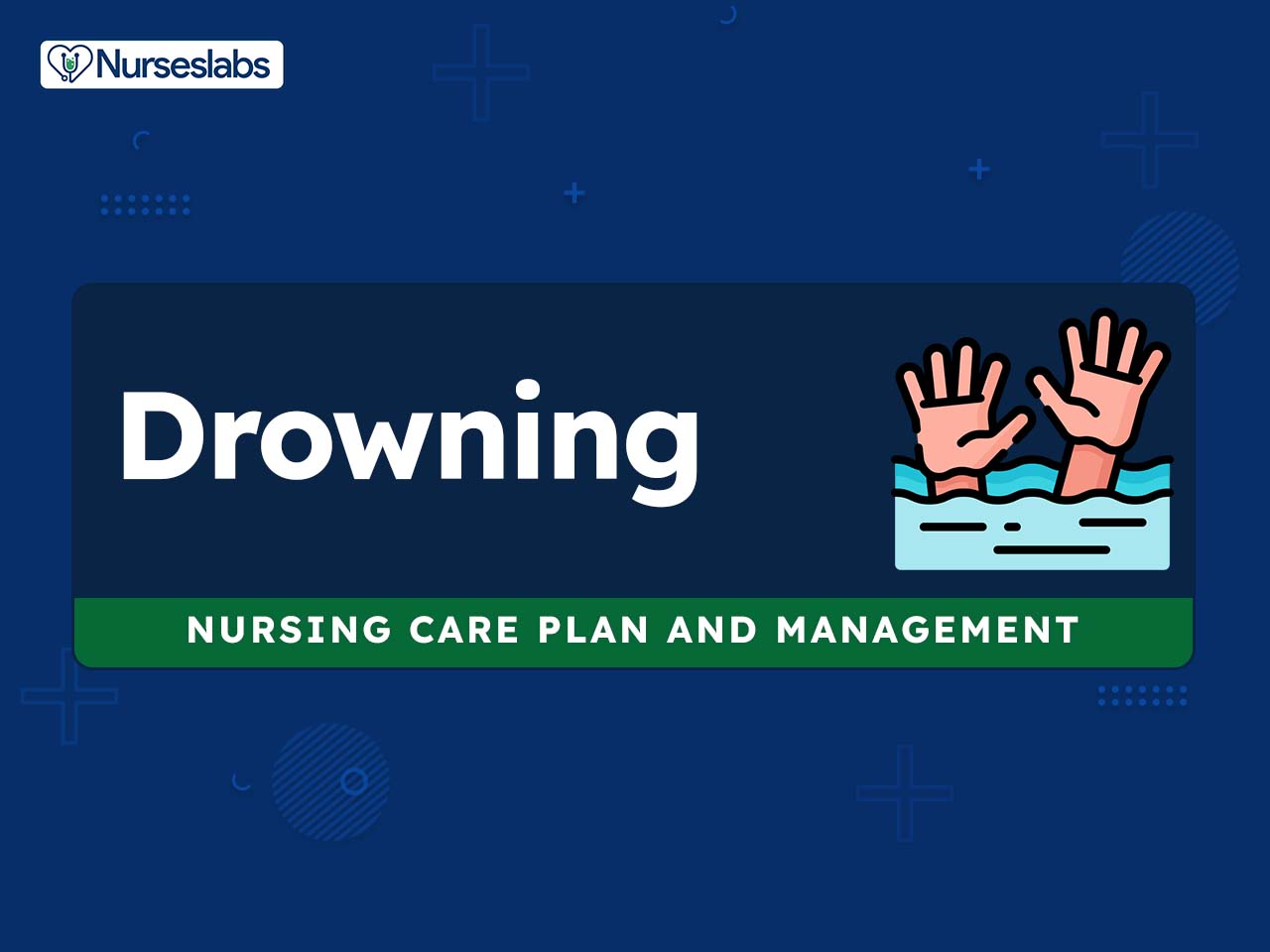

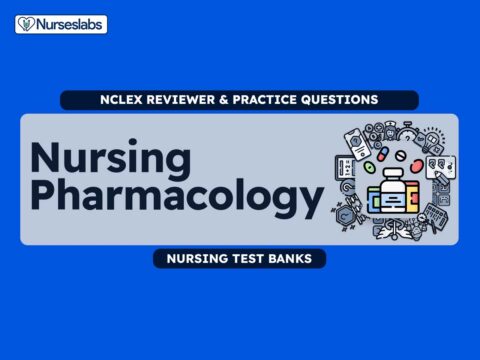
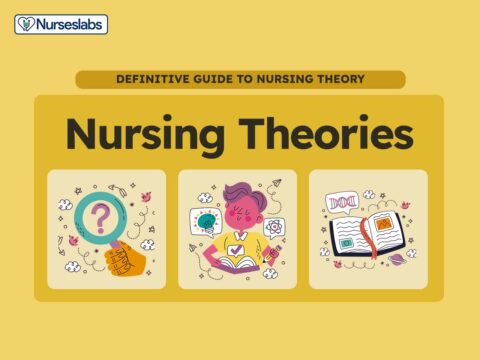

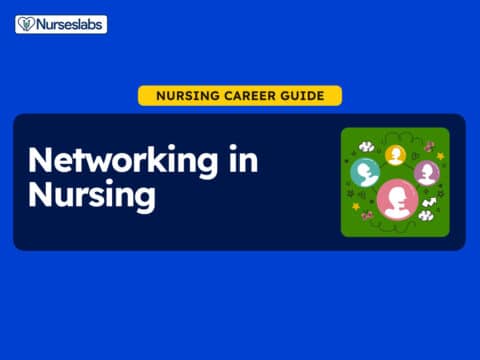



















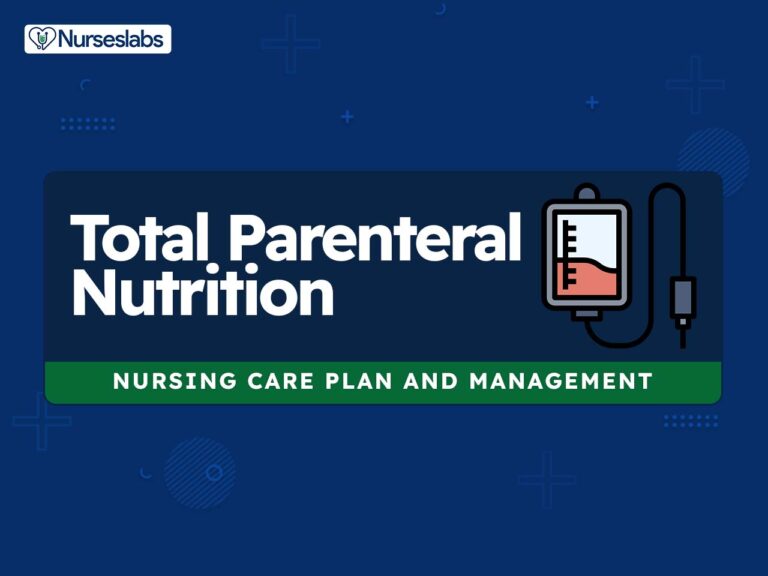


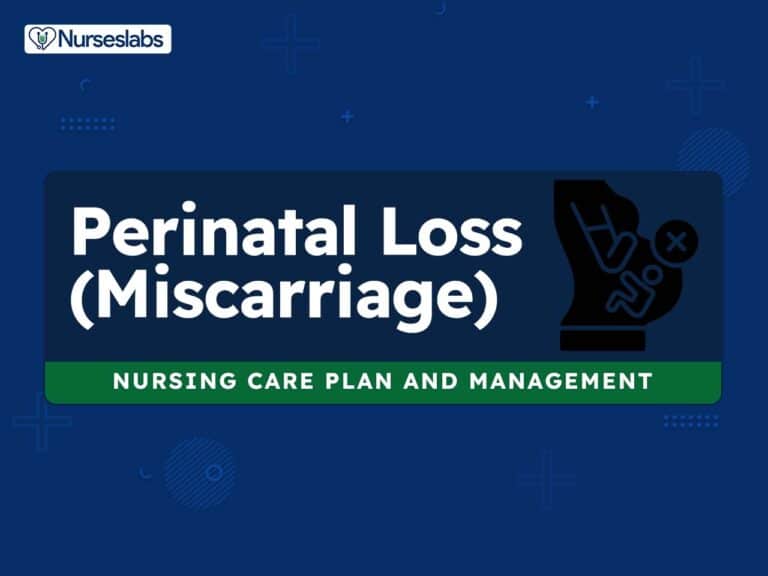
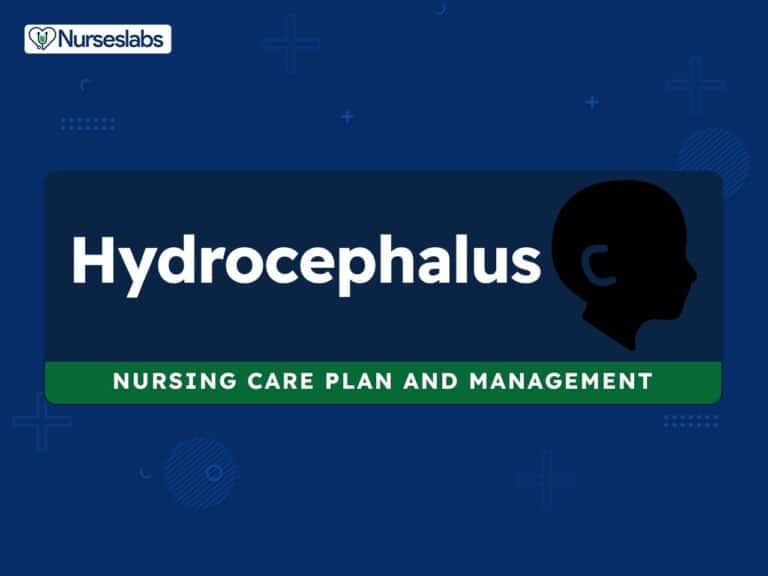
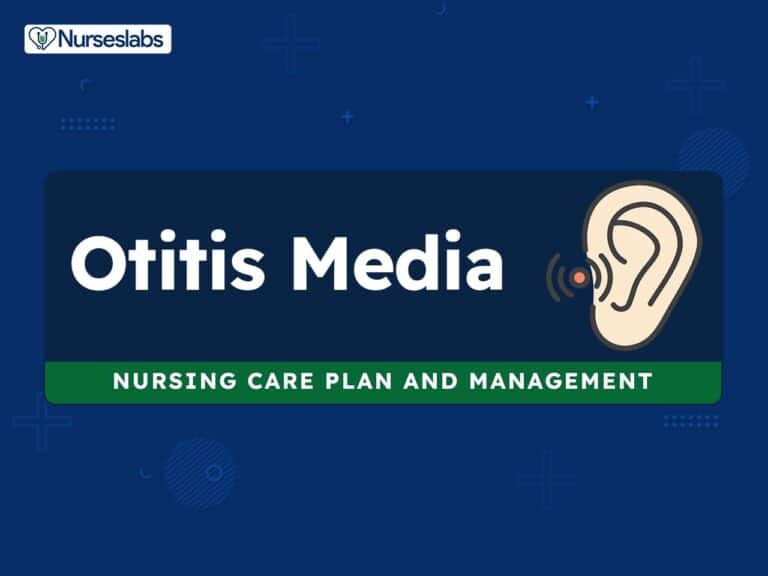

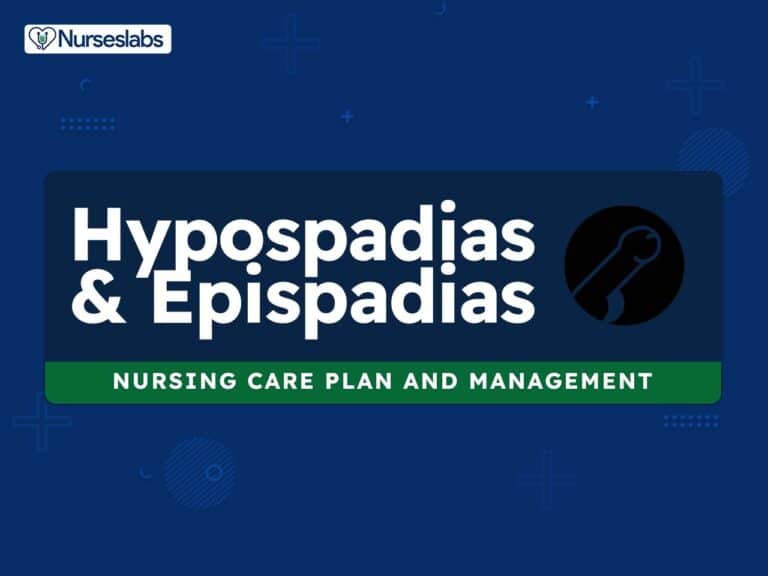

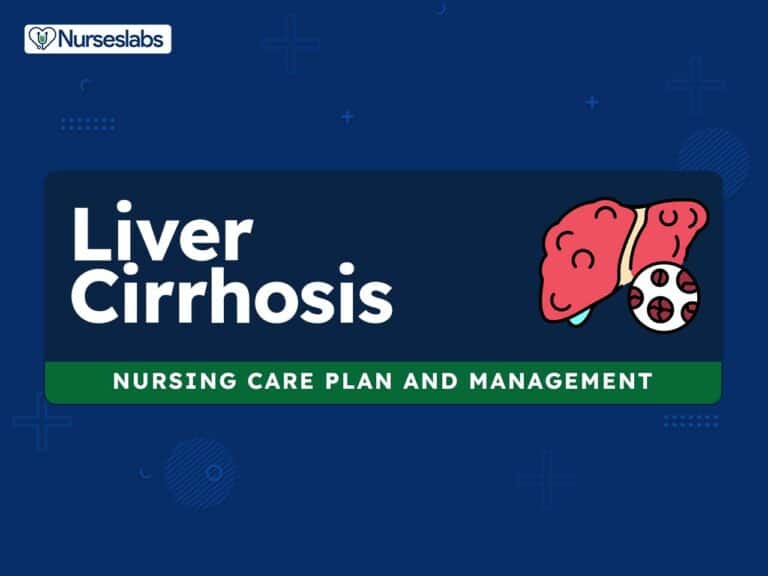

Leave a Comment